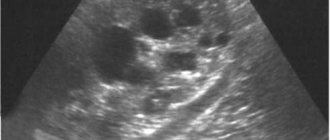Botkin's disease is a disease that occurs as a result of a virus, is accompanied by an inflammatory process and affects the liver. Another name for the disease is Hepatitis A.
This disease is quite well known in Africa, Asian countries and other tourist regions where hot climatic conditions prevail (Turkey, Tunisia, Egypt, India). Such data are due to the fact that it is in hot countries that it is easier for viruses to survive, and in cold countries located in the north, the risk of getting the disease is much lower. More often those people who neglect the rules of personal hygiene and rarely wash their hands after going outside suffer from Botkin's disease. But the infection can also be contracted through food and water contaminated with the virus, especially if the immune system of a potential patient is reduced.
What types of hepatitis are there?
The liver is one of the main human organs. It synthesizes proteins and bile acids, accumulates and breaks down glucose. The main function of the liver is to filter all incoming substances. Of course, if the liver’s function is impaired, the entire human body suffers.
There may be several causes of disease in this organ:
- Infections (hepatitis A, B, C, E, D).
- Diabetes.
- Long-term use of antibacterial drugs and other medications.
- Alcohol abuse.
- Heredity.
- Ecology.
- Lifestyle and unacceptable working conditions.
Liver diseases include:
- Viral hepatitis (A, B, C, etc.). Each form has its own developmental characteristics, treatment methods and consequences. All forms of viral hepatitis are transmitted through household contact, through semen, and also from mother to child.
- Toxic hepatitis is a reaction to taking medications.
- Alcoholic hepatitis occurs as a result of alcohol abuse.
All hepatitis, except form C, are treatable. Hepatitis C is cirrhosis of the liver. There is no cure for this disease. The disease always ends in death.
Development mechanism
Hepatitis A, having penetrated the body, begins its active activity. There are several stages of inflammation development:
- The infection reproduces in the intestinal mucosa and lymph nodes. Having reached the required concentration, it enters the bloodstream and affects the liver. The destructive effect of the pathogen on hepatocytes is accompanied by jaundice and dyskinesia. With bile, the infection passes into the small intestine and is excreted in the feces.
- The pathological process caused by infection involves the liver, reticuloendothelial system, and reticular connective tissue. Subsequently, after damage to hepatocytes, the virus spreads to the spleen, brain, and pancreas.
- At the time of development of pathogenic processes in the liver, immunological protection is developed. T-lymphocytes begin to destroy damaged hepatocytes, mistaking them for enemies. It turns out that the body attacks its own liver, which causes blockage of the bile ducts.
- The virus stops reproducing, and the immune system begins to produce antibodies that clear the infection from the blood.
Viral hepatitis A
In nature, HAV is found only in humans. The source of infection can be sick people, including those with asymptomatic hepatitis A. The main routes of transmission are:
- food;
- water;
- dishes;
- Houseware;
- toys;
- shaking hands, kissing a patient, or having sexual intercourse;
- injection with a dirty syringe.
Under different conditions, the role of each method of infection is different:
- Waterborne infection often causes epidemics of hepatitis A among people who have used contaminated water. Since HAV thrives in the aquatic environment and lives there for up to 10 months, you can become infected by drinking unboiled water, as well as raw shellfish and mussels collected in contaminated areas.
“Food hepatitis” is associated with the consumption of products contaminated at work when workers do not follow hygiene rules. Contamination of vegetables, herbs, berries and fruits that have been fertilized with the feces of a sick person cannot be ruled out.
- The contact method of infection is usually common in boarding schools, orphanages, schools, and children's camps where sanitary and hygienic standards are not observed. The infection is introduced into the human body by dirty hands, through objects contaminated with the virus.
- Experts are discussing the issue of sexual transmission of the virus, especially among homosexuals. It is known that the infection is found in fecal matter and remains active for a long time.
All this can be explained by the persistence of the pathogenic infection and the inability to neutralize it using simple accessible methods. Any person who has not been vaccinated and has not previously had hepatitis A can become infected with Botkin's disease. The risk group includes:
- tourists visiting countries where there is a hepatitis A epidemic who have not been vaccinated;
- relatives of a person with hepatitis A;
- people living in unsanitary conditions;
- people using recreational drugs.
Hepatitis A
Or as it is also called - Botkin's disease (in honor of the doctor who discovered the disease) - an acute viral disease that primarily affects the liver. The nervous system, digestive system and kidneys are also affected.
The disease can be called an epidemic, outbreaks of which are typical for countries in Africa, Asia, and South America.
A large percentage of hepatitis A patients are children, adolescents and the elderly. The main symptoms of Botkin's disease are icteric complexion, headaches, diarrhea. Hepatitis A is a curable disease. It is enough to go to the hospital for help in a timely manner. There are, of course, deaths - 0.1 - 0.3%.
Causes of the disease
The virus that causes hepatitis A is very resistant to the external environment. It has an acid-resistant shell, as a result of which the protective barrier of the stomach is not afraid of it. Hepatitis bacteria persist in water for a long time. Therefore, the main cause of epidemics is contaminated drinking water sources. Botkin's disease is also transmitted through contact and household contact, sometimes by airborne droplets, and also through blood. The virus can be carried by flies. Bacteria, entering the body, are absorbed through the intestines into the blood, after which they spread throughout the body and affect the liver.
The incubation period ranges from 10 to 40 days, after which the first symptoms of the disease begin. Having had jaundice once, a person receives stable immunity for life. Such people can no longer be blood donors.
Predictions and consequences
Despite the fact that infectious hepatitis is considered not the most dangerous type of hepatitis, the consequences of the disease for women and men can be the most severe:
- liver failure;
- stagnation of bile due to damage by inflammation of the biliary tract;
- inflammation of the pancreas;
- cirrhosis, liver cancer.
With timely diagnosis and proper treatment, these consequences can be avoided. Lifelong enlargement of the liver can occur in severe cases of the disease, which negatively affects the body for the rest of life. If a person has once had infectious hepatitis, he develops a strong immunity and is not at risk of re-infection.
Hepatitis A and donation
If a person has had hepatitis A, then donation comes into question, since experts have disagreements regarding this issue. When hepatocytes are damaged during illness, the body produces an antigen that remains in the blood forever.
It is not dangerous for the wearer himself, does not affect his internal organs and does not in any way affect the activity of vital systems. But this does not mean that it is not dangerous for other people if it reaches them through a blood transfusion.
Domestic doctors believe that the HAV virus can become active in a new body and harm the liver, so they prohibit donating blood to such people.
But there is an opposing opinion from European experts who believe that hepatitis A is not prone to chronicity and is not an absolute contraindication to donation. Within just a few years, a person who has recovered from hepatitis A can help save the lives of others. The blood will be thoroughly examined in the future, and if its biochemical parameters are normal, it will be allowed for transfusion.
Symptoms of Botkin's disease
Hepatitis A can occur in the body in several forms: mild (most cases), moderate (about 30%) and severe (1-3%).
Depending on the form of the disease, symptoms may also be different. Mainly:
- Increased body temperature, lethargy, fatigue.
- Nausea, vomiting, upset.
- Pain in the liver area. When palpated, this organ is noticeably enlarged.
- Disturbed sleep, lack of appetite.
- A runny nose and cough may occur.
- The skin and membranes of the eyes acquire a characteristic yellowish color. The icteric period lasts from three to six weeks.
- Urine becomes dark, feces, on the contrary, become discolored.
Often the signs of the disease are perceived as a common cold (flu, ARVI), and not as Botkin’s disease. Symptoms worsen, jaundice appears, and only then do patients consult a doctor.
On average, the disease lasts about forty days. The course of the disease depends on age, immunity, concomitant diseases and treatment methods.
One-year-old children and the elderly are more susceptible to infection. Therefore, everyone should know what Botkin’s disease is, how it is transmitted and what its symptoms are. After all, the disease often affects entire families. Timely diagnosis can protect against severe forms of the disease.
Classification and possible complications
The disease is classified by type, form and severity. According to severity they are distinguished:
- clinical - in which there is an increase in temperature, vomiting, lack of appetite, enlarged liver, icteric skin color;
- laboratory - in which high levels of bilirubin and prothrombin are detected in the blood.
The types of hepatitis A are:
- Typical. This form of hepatitis can be:
mild - in which multiple small foci of inflammation are formed. With a good metabolism and the liver’s rapid ability to reproduce itself, recovery occurs quite quickly;
moderate and severe - which are distinguished by large foci of damage. With a moderate form, a complete cure is quite possible, but traces of hepatitis will remain in the form of small scars. In this case, the disease can occur either in acute or protracted form.
- anicteric – characterized by damage to small areas of the liver. Due to its rapid ability to regenerate, dead organ tissues are restored again, and healing occurs. If the course is slow, the anicteric form can lead to cirrhosis. When small lesions connect, the disease can develop into an icteric form;
erased - retains the characteristics of an anicteric course, but is characterized by an insignificant increase in bilirubin content;
Infectious hepatitis can proceed smoothly, without any consequences, or with complications. Their development is greatly influenced by concomitant diseases, illiterate treatment, parallel infection with hepatotropic viruses, non-compliance with diet and specialist recommendations. There are such complicated forms of the disease as:
- fulminant or transient - characterized by drowsiness, lethargy, liver problems, encephalopathy and coma. Pathology is often preceded by overexcitation, sleep disturbance, and confusion;
- relapse occurs in 20% of cases. This form is easier, but some symptoms are added to it, for example, itching, pain in muscles and joints. Between the initial manifestation of the pathology and relapse, the symptoms completely disappear;
- cholestatic form - develops due to obstructed outflow of bile. Main signs: itching, yellowing of the skin, rapid weight loss due to lack of appetite and vomiting;
- autoimmune form - possible with a genetic predisposition or after previous hepatitis.
Death is possible in elderly patients and people with liver disease that developed before hepatitis infection. Children's livers withstand a viral attack better and subsequently recover faster. With age, this organ is subjected to various stresses, so the disease leaves an imprint on it for the rest of its life.
Complications after hepatitis A
Hepatitis A, unlike its other forms, is completely curable. After therapy, liver function is restored. People gain lifelong immunity.
In rare cases, Botkin's disease causes health problems. The causes and symptoms of complications can only be associated with non-compliance with doctor’s instructions, violation of bed rest and poor diet.
Patients may complain of continued pain and vomiting for another two months after therapy. This is normal, no need to panic.
You can minimize the complications and consequences of hepatitis with the help of proper dietary nutrition.
- Food should be consumed in small portions, but often.
- During illness, a person loses a large amount of vitamins, so it is imperative to replenish them. The diet should include fresh vegetables, fruits, juices, and dairy products.
- The consumption of fatty, salty, smoked, pickled and spicy foods is prohibited.
- “Fasting” days are welcome. Dairy products, vegetables and fruits are good for this.
- Fans of alcoholic beverages will have to give them up for a while.
- All food products must be thoroughly processed.
How to treat Botkin's disease?
First of all, to establish an accurate diagnosis, you should go to the hospital. Only a doctor, after examining and passing all the tests, can give an opinion to the patient. Considering that Botkin’s disease does not always have pronounced symptoms, it is impossible to talk about the presence of infection in the body without additional diagnostics. For research you need: blood (general and biochemical analysis is performed), urine and feces. If class M antibodies were detected in biomaterials, this indicates the presence of infection in the body. Antibodies of class G – immunity to the disease.
Determine how to treat Botkin's disease and symptoms. Treatment of mild and moderate forms of the disease can be done at home. The main thing is bed rest and dietary nutrition. Drinking plays an important role, which is necessary to reduce intoxication. Treatment of severe forms of hepatitis A is carried out inpatiently, in infectious diseases departments.
To improve liver function, in addition to vitamins, specific drugs such as Gepabene and Essentiale can be prescribed.
Clinical picture
The incubation period of the disease ranges from 14 to 42 days and does not manifest itself in any way. Its further development occurs in several stages, each of which is characterized by certain symptoms:
- On days 42-54, early signs of hepatitis may be:
- loss of appetite;
- increased sweating;
- pain in muscles and joints;
- nausea, vomiting that does not bring relief;
- diarrhea (rare);
- fever (the patient’s body temperature rises to 38 °C). Most victims do not experience these symptoms at all, especially in children.
severe fatigue;
- increase in the size of the liver and spleen;
darkening and cloudiness of urine;
This disease may be:
Spicy. In which the disappearance of signs and stabilization of biochemical values occurs over a period of 3 months. In this case, the cyclicity of jaundice is clearly expressed.
- Lingering. When the recovery process is delayed up to six months or more due to a prolonged icteric, but more often anicteric stage. Despite the normalization of bilirubin, the pathologically enlarged liver size still persists. In addition, other indicators in blood tests remain outside the normal range.
This course of the disease takes on an undulating pattern: after a decrease in bilirubin, an exacerbation occurs again. This can be facilitated by inflammation of the biliary tract and acute respiratory viral infections. The six-month period for the final cure of the protracted form of hepatitis A is very conditional, since it can last longer. At the same time, a transition to a chronic form is possible.
- Chronic. It can begin immediately after the exacerbation stage or develop gradually, when complete recovery seems to have already occurred. Chronic hepatitis can develop in a short period, but at the same time it can take years to form. The disease is characterized by pathological changes in the liver and biliary tract, the development of cholecystitis, angiocholitis.
Many experts believe that there is no chronic form of hepatitis A. But this is far from true. If the acute form of hepatitis is left untreated, the liver suffers from accumulated toxins and the pathology develops into a complicated long-term form. It has mild symptoms and can progress to cirrhosis or hepatosis.
Diet No. 5 for liver diseases
It is no secret that proper and healthy food is the best assistant in the fight against diseases and infections. For each type of disease there are therapeutic nutrition schemes developed by Soviet nutritionist Mikhail Pevzner.
Diet No. 5 is designed specifically to improve liver function. The essence of the diet is to limit the consumption of fatty and unhealthy foods. So, during illness you need to exclude:
- Smoked, fatty, marinades, pickles and offal.
- Fresh baked goods and confectionery.
- Hot herbs and spices.
- Carbonated drinks, strong coffee and alcohol.
Allowed:
- Yesterday bread, dried flour products.
- Cereals, soups, porridges.
- Vegetables fruits.
- Low-fat dairy products.
- Lean meat and broths.
- Teas, juices, coffee with milk.
- Vitamins.
It is better to cook food by steaming. This preserves a large number of useful microelements.
Symptoms of Botkin's disease in children
Botkin's disease refers to acute intestinal infections. You can become infected with the disease through food, water, and also from infected patients.
The incubation period averages 28 days, after which the disease itself begins, which consists of three stages: pre-icteric, icteric and convalescent. Each period has its own symptoms.
At the first stage of the disease, the child becomes very capricious and loses appetite. Sleep may be disturbed and the temperature may rise. Nausea, vomiting, and diarrhea appear. This period is also characterized by the appearance of cough and runny nose.
The symptoms of Botkin's disease in adults and children are initially the same and can often be mistaken for another disease (for example, influenza). When the icteric period begins, the patient’s condition improves. However, yellowness appears on the eye membranes and skin. Pain in the liver may also occur. At this time, the patient begins to perceive the symptoms of Botkin’s disease correctly and seeks help from a doctor.
The recovery period is characterized by the gradual extinction of all symptoms. Liver functions are restored, the patient's condition is stabilized. Sometimes nausea and pain may persist for a month or two after recovery.
Considering how complex Botkin’s disease can be and how the pathogen is transmitted, it is better to treat in hospitals. This applies in particular to families with young children or elderly people.
Forecast for life
With a timely diagnosis of the disease and a correctly selected treatment regimen, 80-90% of patients have a chance of recovery. Alas, usually the onset of the disease cannot be detected, and in most patients it passes into the chronic stage, at which the prognosis is much worse.
Medical data indicate that every fifth patient develops cirrhosis of the liver within 20-30 years. If it occurs, the patient's chances of survival for at least 5 years are negligible. A very poor prognosis for those patients in whom cirrhosis has progressed to hepatocellular carcinoma, that is, cancer.
Hepatitis C is not a death sentence. If you consult a doctor for any long-term ailment, discomfort in the right hypochondrium, even loss of appetite, there is a chance to “capture” the disease at its onset and get rid of it forever.
Botkin's disease and pregnancy
Botkin's disease is a very dangerous disease for expectant mothers. While most people suffering from hepatitis A suffer from mild to moderate forms of the disease, pregnant women almost always suffer from a severe form.
Botkin's disease during pregnancy causes liver dystrophy. The infection also penetrates through the placenta to the baby. Children born from infected mothers often have various defects and pathologies. The woman herself may die during childbirth. This is because the disease affects blood clotting. Caesarean section is also contraindicated.
At all stages of pregnancy, the cause of miscarriages, premature births and stillborn children is Botkin's disease. Every woman should know the symptoms, treatment and signs of Botkin's disease. Proper preventive measures will help her protect herself from the sad consequences of this disease during pregnancy.
Prevention of hepatitis A
Of all types of hepatitis, the easiest to prevent is hepatitis A (Botkin's disease), which is transmitted by the fecal-oral route. To do this, it is enough to observe the rules of personal hygiene, as well as educate people about this disease.
Symptoms of Botkin's disease can be different, but the main ones are jaundice, vomiting, headaches and diarrhea. If people sought help in a timely manner, perhaps the number of patients would be significantly reduced. After all, the incubation period of hepatitis A lasts quite a long time, and all this time the person is already a carrier of the pathogen.
To protect yourself and your loved ones from this disease, you should follow these simple rules:
- Always and everywhere you need to wash your hands with soap.
- Handle food carefully. Vegetables and fruits should only be washed under running water.
- It is better to boil tap water. The pathogenic bacteria are resistant to the aquatic environment, and boiling kills them in a matter of minutes.
- Food products should be purchased in specialized stores, and not in spontaneous markets.
- If possible, it is better to get vaccinated against hepatitis A.












